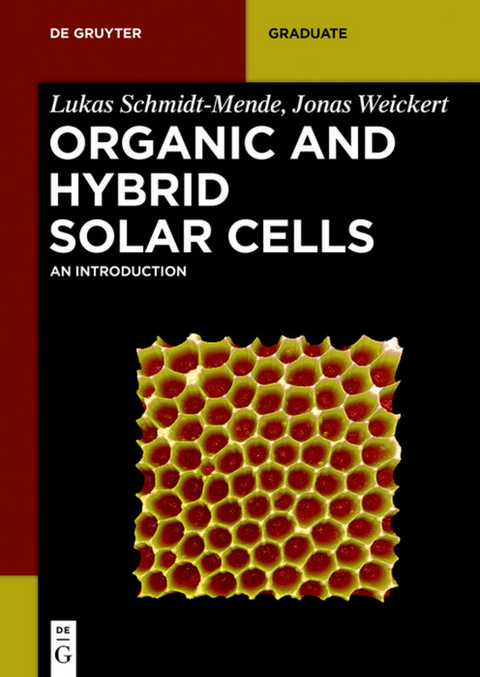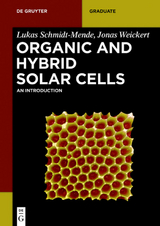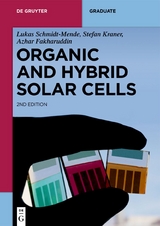Organic and Hybrid Solar Cells
De Gruyter (Verlag)
978-3-11-028318-1 (ISBN)
With the increasing world-energy demand there is a growing necessity for clean and renewable energy. The sun being one of the most abundant potential sources accounts for less than 1% of the global energy supply. The market for solar cells is one of the most strongly increasing markets, even though the prize of conventional solar cells is still quite high. New emerging technologies, such as organic and hybrid solar cells have the potential to decrease the price of solar energy drastically. This book offers an introduction to these new types of solar cells and discusses fabrication, different architectures and their device physics on the bases of the author's teaching course on a master degree level. A comparison with conventional solar cells will be given and the specialties of organic solar cells emphasized.
Lukas Schmidt-Mende and Jonas Weickert, University of Konstanz, Konstanz, Germany.
From the Contents:
General history of solar cells
History of solar cells
First applications
First organic and hybrid solar cells
Brief Introduction to solar cells
Semiconductors (ligth matter interaction, light absorption, direct and indirect SCs)
Doping, pn-junctions
Solar cell parameters (current voltage, efficiency, efficiency limit)
Physics of pn-junction solar cells (recombination, equivalen circuit, type of losses)
Conventional solar cell architectures (materials, device structure, record devices)
Introduction into organic and hybrid solar cells
Organic semiconductors (molecules, polymers, pi-orbitals and transitions)
Organic solar cells
Device architecture (bulk-heterojuncion, bilayer)
Fundamental working principle
Morphology
Materials and processing
Physics of organic solar cells
Exciton generation and diffusion
Exciton separation and charge generation
Charge transport and extraction
Hybrid solar cells
Dye-sensitized solar cells (architecture, fundamental working principle, materials and processing, and physics)
Hybrid nanocrystal solar cells (architecture, fundamental working principle, materials and processing, and physics)
Nanostructured solar cells (architecture, fundamental working principle, materials and processing, and physics)
Experimental methods
Standard characterization methods (IV, EQE, IQE)
Spectroscopy methods
Mass production/ lifetime (roll-to-roll, printing, flexible substrates, stability, lifetime)
| Erscheint lt. Verlag | 25.5.2016 |
|---|---|
| Reihe/Serie | De Gruyter Textbook |
| Zusatzinfo | b/w line drawings |
| Verlagsort | Berlin/Boston |
| Sprache | englisch |
| Maße | 170 x 240 mm |
| Gewicht | 534 g |
| Themenwelt | Naturwissenschaften ► Physik / Astronomie |
| Technik ► Elektrotechnik / Energietechnik | |
| Schlagworte | catalysis • Catalysis; Chemical Engineering; Electrochemistry; Materials Science; Organic Chemistry • chemical engineering • Electrochemistry • Energie • Festkörperphysik • Materials Science • Materialwissenschaft • Organic Chemistry • Photovoltaik • Polymere • Solarzelle |
| ISBN-10 | 3-11-028318-2 / 3110283182 |
| ISBN-13 | 978-3-11-028318-1 / 9783110283181 |
| Zustand | Neuware |
| Informationen gemäß Produktsicherheitsverordnung (GPSR) | |
| Haben Sie eine Frage zum Produkt? |
aus dem Bereich






